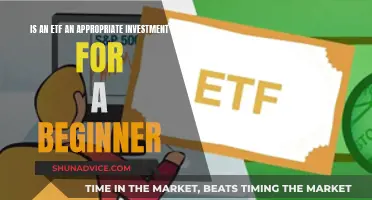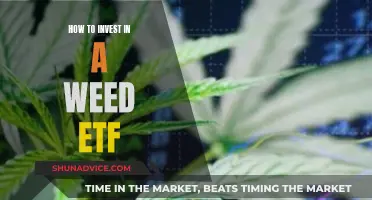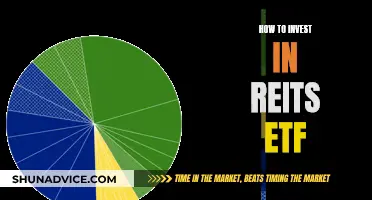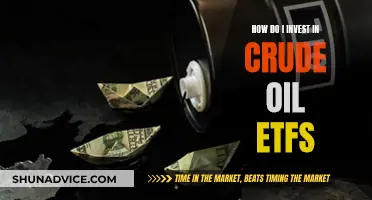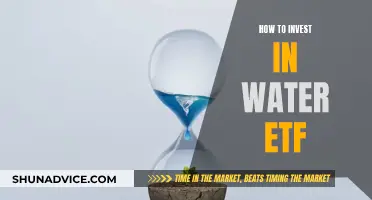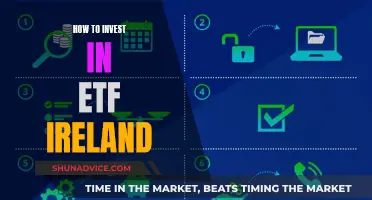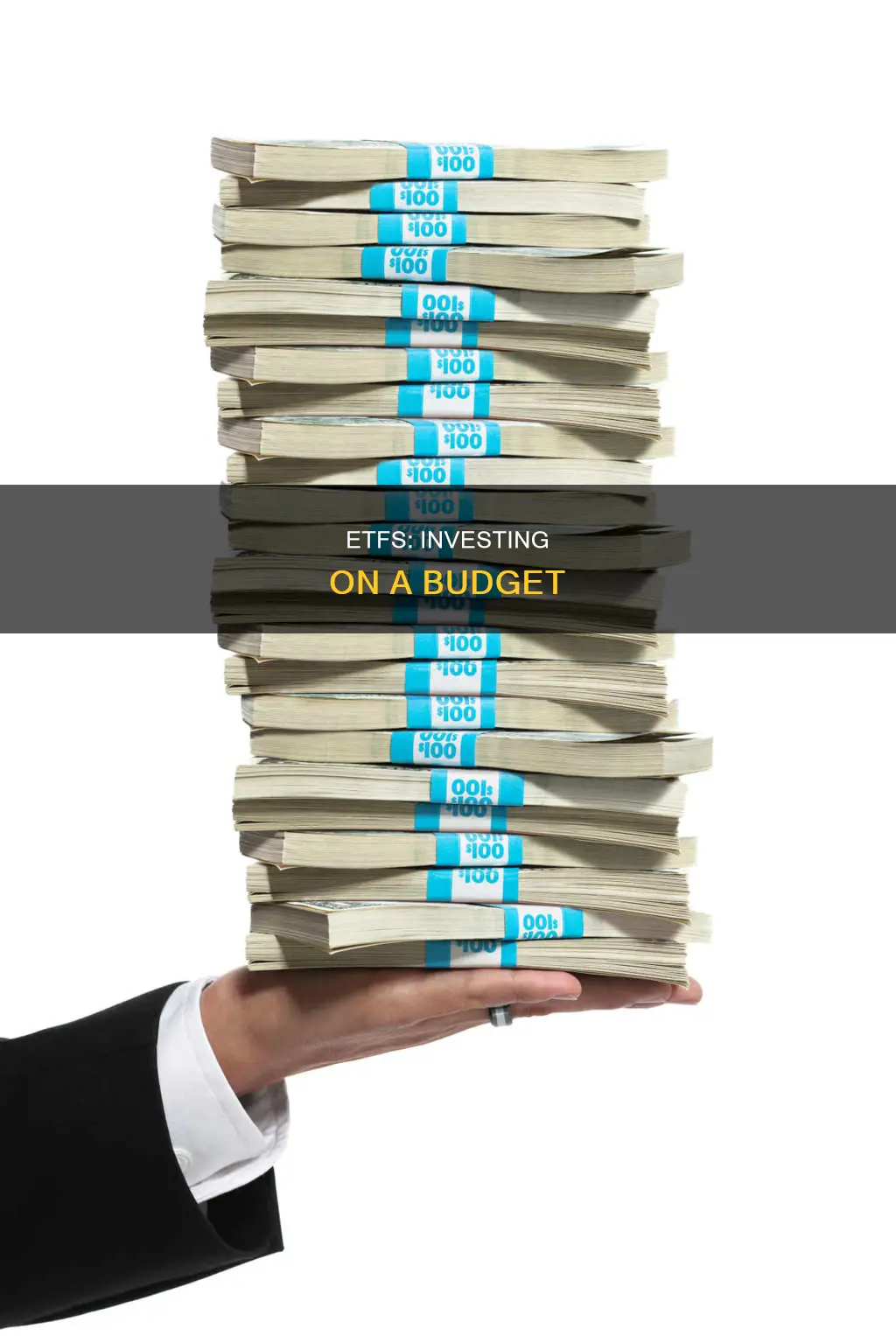
Exchange-traded funds (ETFs) are a popular investment vehicle, with assets in U.S.-based ETFs hitting a record $9 trillion in May 2024. ETFs are similar to mutual funds in that they hold baskets of securities, but they trade like stocks on major exchanges such as the NYSE and Nasdaq. They are a cheap and low-risk way to invest in the stock market, providing instant diversification and exposure to a broad range of opportunities. ETFs are also easy to buy, hold and sell, with most being highly liquid and tradable on any business day.
ETFs come in various types, including those that track major indexes like the S&P 500 or Nasdaq Composite, give investors exposure to specific sectors like technology or banking, or focus on international markets such as China or emerging markets.
When choosing an ETF, investors should consider factors such as the fund's expense ratio, which impacts the cost to investors, and its performance history. It's also important to understand the underlying holdings of an ETF to ensure they align with your investment goals and risk tolerance.
To invest in ETFs, you'll need to open a brokerage account and decide which ETFs to buy based on your investment strategy. It's generally recommended to hold ETFs for the long term and avoid over-trading, as this can impact your returns.
| Characteristics | Values |
|---|---|
| Commission fees | Many brokers have decided to drop their ETF commissions to zero, but not all have. |
| Liquidity | ETFs are highly liquid and can be traded on major exchanges on any business day. |
| Tax advantages | ETFs have two major tax advantages over mutual funds. Mutual funds may have to pay capital gains taxes throughout the lifetime of the investment, whereas ETFs only incur capital gains taxes when you sell the investment. ETFs also allow you to decide when to sell, making it easier to avoid short-term capital gains tax rates. |
| Risk | ETFs tend to be less volatile than individual stocks and provide exposure to a broad range of opportunities. |
| Diversification | ETFs allow investors to diversify across horizontals, like industries. |
| Cost | ETFs are cheap and typically carry lower risk than individual stocks. |
What You'll Learn

Choosing a brokerage account
You'll need a brokerage account to buy and sell ETFs. The majority of online brokers now offer commission-free stock and ETF trades, so cost isn't a major consideration. Instead, the best course of action is to compare each broker's features and platform. If you're a new investor, it might be a good idea to choose a broker that offers an extensive range of educational features, such as E*Trade or Schwab. There are several other excellent brokers to choose from, too.
When choosing a brokerage account, it's important to consider your investment goals and needs. Some brokers may offer a wider range of investment options, while others may have lower fees or better customer support. It's also worth considering the platform's usability and whether it offers any additional tools or resources that could be beneficial to you.
Additionally, you may want to think about the account minimums and transaction fees associated with the brokerage account. Some brokers may require a minimum deposit to open an account, while others may charge fees for certain types of transactions. It's important to carefully review the terms and conditions before making a decision.
Once you've compared the features and considered your own needs and goals, you can make an informed decision about which brokerage account is the best fit for you.
SPDR vs ETF: Which Investment Option is Better?
You may want to see also

ETF expense ratios
When investing in ETFs, it's important to be aware of expense ratios and other costs. The operating expense ratio (OER) is incurred while owning the ETF and covers the fund's management, administration, and other costs. It is an ongoing expense that is particularly relevant for long-term investors. ETFs with lower expense ratios and lower trading costs typically offer better value to investors, as higher costs may significantly erode returns over time.
Expense ratios are expressed as a percentage of a fund's average net assets and can include operational costs and annual fees. For example, an expense ratio of 0.04% on a $10,000 investment would result in $4 in fees paid to the fund manager for that year. As the value of the investment grows, the amount paid in fees also increases.
Actively managed ETFs tend to have higher expense ratios than passive, index-tracking funds. The average expense ratio for index ETFs is typically lower than that of index mutual funds, with ETFs historically having an average of 0.52% compared to 0.85% for mutual funds.
When selecting an ETF, it is important to compare its expense ratio to that of other funds, especially those tracking the same market index or providing exposure to similar types of assets. While expense ratios are an important consideration, investors should also evaluate the ETF's total cost of ownership (TCO), which includes trading and holding costs.
- IShares Core S&P 500 ETF (IVV) - with an expense ratio of 0.03%
- IShares Core S&P Mid-Cap ETF (IJH) - expense ratio of 0.05%
- IShares Core S&P Small-Cap ETF (IJR) - expense ratio of 0.06%
- Vanguard Total International Stock ETF (VXUS) - expense ratio of 0.08%
- IShares MSCI USA ESG Select ETF (SUSA) - expense ratio of 0.25%
- Vanguard Dividend Appreciation ETF (VIG) - expense ratio of 0.06%
Invest in HDFC Sensex ETF: A Beginner's Guide
You may want to see also

ETF diversification
ETFs are a great way to get exposure to a diversified portfolio of stocks, bonds, commodities, and other asset classes. By investing in ETFs, you can reduce risk and increase your potential for returns. Here are some ways you can use ETFs to diversify your portfolio:
Core Stock and Bond ETFs:
These are the building blocks of your portfolio and provide exposure to broad markets. For example, the iShares Core S&P 500 ETF (IVV) tracks the S&P 500 index, giving you access to a diversified basket of large-cap U.S. stocks. Similarly, you can invest in international stocks through ETFs like the Vanguard Total International Stock ETF (VXUS) or focus on specific regions like Europe with the Vanguard FTSE Europe ETF (VGK). For bonds, consider a total bond market ETF like the iShares Core U.S. Aggregate Bond ETF (AGG), which tracks the domestic investment-grade bond market.
Sector and Industry ETFs:
Sector and industry ETFs allow you to gain exposure to specific sectors or industries, such as healthcare, technology, or financials. For example, the Health Care Select Sector SPDR ETF (XLV) provides access to a basket of large-cap healthcare stocks. You can also find ETFs that focus on specific industries within these sectors, like biotech or banks.
Style ETFs:
Style ETFs allow you to invest in specific styles of companies, such as growth or value. For instance, the Avantis U.S. Small Cap Value ETF (AVUV) focuses on small-cap value stocks, which have historically outperformed over the long term.
Factor ETFs:
Factor ETFs use quantitative models to select stocks based on certain characteristics or factors, such as size, value, momentum, or quality. For example, the iShares MSCI USA ESG Select ETF (SUSA) focuses on environmental, social, and governance (ESG) factors, while the JPMorgan U.S. Quality Factor ETF (JQUA) selects high-quality stocks based on profitability, financial risk, and earnings quality.
Commodity and Alternative ETFs:
Commodity ETFs provide exposure to commodities like agriculture, energy, and metals. For instance, the Direxion Auspice Broad Commodity Strategy ETF (COM) tracks a basket of commodity futures contracts. There are also alternative ETFs that focus on areas like real estate or hedge fund strategies. The iMGP DBi Managed Futures Strategy ETF (DBMF), for example, employs a hedge fund-like strategy by taking long and short positions across various asset classes.
Dividend ETFs:
Dividend ETFs focus on stocks that pay dividends and are a great way to generate income from your portfolio. Examples include the Schwab U.S. Dividend Equity ETF (SCHD), which targets high-dividend-yielding stocks, or the WisdomTree Global ex-US Quality Dividend Growth Fund (DNL), which focuses on companies that consistently raise their dividends.
Customized ETF Portfolios:
You can also build a customized ETF portfolio by combining multiple ETFs to target specific allocations to various asset classes, sectors, or styles. For instance, you could have separate ETFs for large-cap U.S. stocks, small-cap U.S. stocks, international developed-market stocks, and emerging-market stocks. This approach allows you to fine-tune your portfolio to align with your specific investment goals and risk tolerance.
Remember, when investing in ETFs, it's important to consider the expense ratios and trading costs, as these can impact your overall returns. Additionally, diversification does not guarantee profit or protect against losses, but it can help reduce the impact of market volatility on your portfolio.
A Beginner's Guide to Investing in the DOD ETF
You may want to see also

ETF liquidity
Liquidity is one of the most important features of exchange-traded funds (ETFs) and is frequently misunderstood. An ETF's liquidity refers to how easily shares can be bought and sold without impacting the ETF's market price. In other words, a highly liquid ETF allows for swift transactions at prices that closely reflect the intrinsic value of the underlying assets, ensuring that investors can easily enter or exit positions without encountering significant price discrepancies or incurring high trading costs.
The concept of liquidity in ETFs extends beyond the traditional understanding applied to individual stocks. It is a multitiered framework involving both the dealer and secondary markets. In the primary or dealer market, liquidity is facilitated through the creation and redemption mechanisms. This unique process allows for adjusting the ETF's supply to meet investor demand, maintaining price stability. In the secondary market (i.e., the stock market), liquidity is described through the trading volume of the underlying securities in the ETF and their bid-ask spread. A narrower spread frequently signifies higher liquidity and lower trading costs.
Liquidity describes how easily an investment can be converted into cash. A highly liquid asset can be bought and sold quickly, in large amounts, and without significantly impacting its market price. Less liquid assets may take longer to sell or require accepting a discounted price.
The primary factors that influence an ETF’s liquidity are its composition and the trading volume of the securities that make it up. The secondary factors that influence an ETF’s liquidity include its trading volume and the investment environment.
Low-volume ETFs do not necessarily have low liquidity. The creation and redemption process occurs in the primary market. If there is demand for a particular ETF, a designated broker or market maker can create new units by delivering a basket of securities to an ETF sponsor. In return, the ETF sponsor delivers ETF units of equal value to the market maker, which the market maker then sells publicly on the exchange to meet investor demand. The reverse process is followed in the case of redemptions, when the supply of units is larger than demand.
In the secondary market, investors buy and sell the units on the exchange without the ETF sponsor’s involvement. These transactions between individual investors occur throughout the trading day at market prices.
The daily volume traded of an ETF is often incorrectly used as a reference point for liquidity. An ETF’s liquidity is determined by the liquidity of the underlying securities, whereas trading volume is influenced by the activity of investors. If an ETF invests in securities that have limited supply or are difficult to trade, this may impact the market makers’ ability to create or redeem units of the ETF, which may then affect the portfolio’s liquidity. However, most ETFs predominantly invest in liquid securities that trade on major exchanges.
The Cheapest Way to Invest in ETFs
ETFs are popular with retail and institutional investors because they are managed by skilled professionals and can provide a high level of instant diversification. Plus, they are easy to buy, hold, and sell. Most ETFs are highly liquid and can be traded on major exchanges on any business day, just like shares of common stock.
- IShares Russell 2000 ETF (IWM)
- Vanguard Utilities Index Fund ETF Shares (VPU)
- Invesco Total Return Bond ETF (GTO)
- Schwab U.S. REIT ETF (SCHH)
- Invesco Financial Preferred ETF (PGF)
- IShares U.S. Treasury Bond ETF (GOVT)
- Vanguard Mid-Cap Value Index Fund ETF Shares (VOE)
Invest in ICICI Prudential Nifty ETF: A Beginner's Guide
You may want to see also

ETF volatility
Volatility ETFs are exchange-traded funds that aim to give investors exposure to the Chicago Board Options Exchange Volatility Index (the VIX) or insulate their portfolios from excessive market volatility. Volatility ETFs are often referred to as "fear indicators" as they tend to move in the opposite direction of the broad market. They are used primarily by traders looking to capitalise on sharp downturns in the market.
The VIX is a reliable indicator of future stock market volatility as it tracks the magnitude of price changes that traders expect to see in the S&P 500 market index. Most volatility ETFs trade VIX futures contracts as the core goal of their investment portfolios.
There are two main types of volatility ETFs:
- VIX-based ETFs: These invest in a combination of futures contracts, Treasury securities or other derivative contracts that speculate on the future price movements of the S&P 500 index. They are designed for sophisticated investors and are not suitable for long-term buy-and-hold strategies.
- Low-volatility stock ETFs: These help investors manage the impact of volatile price declines on their portfolios. They are more straightforward and can be held over the long term. Low-volatility ETFs are similar to smart beta ETFs and are appropriate for a wider range of investors.
Volatility ETFs can be highly volatile and are usually significantly more volatile than major stock indexes. Investors could potentially lose the full value of their investment over very short periods of time. They are intended for short-term use and investors should actively manage and monitor their investments, even on a daily basis.
Ally Invest's ETF Offerings: SPYDER ETFs and More
You may want to see also
Frequently asked questions
You can invest in ETFs by following these three steps: First, open a brokerage account. Second, choose your first ETFs. Third, let your ETFs do the hard work for you.
An ETF's expense ratio indicates how much of your investment in a fund will be deducted annually as fees.
ETFs are a good choice for beginners who do not have a lot of experience investing in the markets. However, if the ETF is investing in market-based assets such as stocks and bonds, it can lose money.


